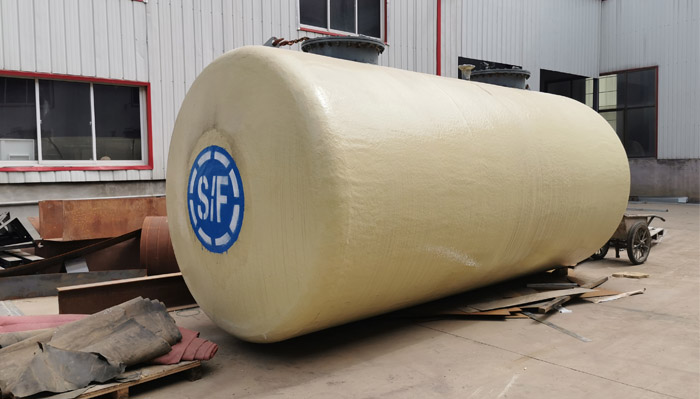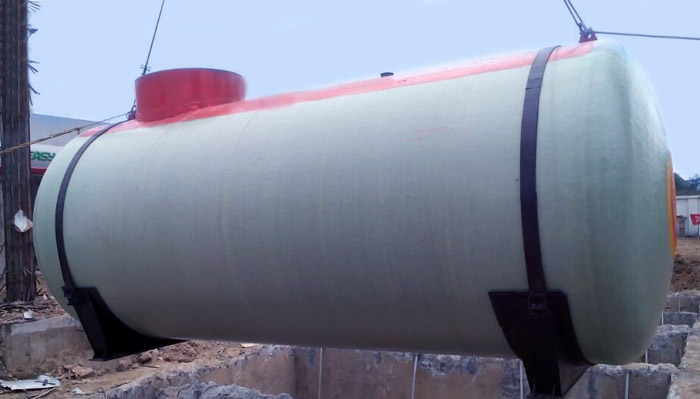Product Category
Method for identifying quality of SF double-layer oil storage tank
Date: Aug 24, 2020

The quality of gas station oil tanks is very important. SF double-layer oil tanks have a higher stability coefficient than traditional oil tanks. When purchasing, pay attention to identifying the quality of pressure vessels, checking the tightness of their joints and the thickness of the tank wall. In order to prevent corrosion in the tank and reduce the quality of the oil tank and the quality of the oil, the double-layer oil tank needs to be cleaned regularly. Here is how to identify the quality of sf double-layer oil tanks.
1. Check the tightness of the welding seam of the pressure vessel with kerosene: remove dirt and apply white powder emulsion. After drying, spray kerosene on the other side of the weld, if spraying kerosene after 12 o'clock (the period can be extended in the case of low temperature). If the surface of the white weld is mottled, the weld meets the requirements.
2. Oil tank wall experiment: carry out a water filling experiment on the oil tank to check whether the oil tank wall is tight. At the same time, you can also check whether the appearance of the tank wall and weld is normal.
3. Check the wall thickness of the tank: when the materials enter the site, it is necessary to carry out inspection and storage. Above-ground oil tanks should be inspected and inspected by ultrasound with higher power.
4. Magnetic flux leakage scanning to check the bottom of the pressure vessel: Use a magnetic flux leakage scanner to check the bottom of the oil tank. When the bottom of the double-layer oil tank is flawed, the magnetic field distribution will change and the sensor can also see it. 5. Vacuum leak test method to check the weld of the tank bottom plate: when checking the bottom plate. Apply soapy water to the weld and cover the vacuum box for observation.
5. Vacuum leak test method to check the weld of the tank bottom plate: when checking the bottom plate. Apply soapy water to the weld and cover the vacuum box for observation.
6. Measure the bottom pressure of the oil tank, calculate the medium content in the tank, and check the leakage of the oil tank. If the quality continues to decrease, then leakage has occurred.
7. Add dye to the water and check the leaking point in the hydraulic test; listen to the sound on the tank wall or install a sound wave sensor on the tank wall, set up survey well monitoring in the pressure vessel tank area, use a dipstick to check and inspect the oil tank level leak.
8. When the double-layer oil tank is receiving and dispatching operations, leak detection is carried out according to the difference in actual in and out volume.
1. Check the tightness of the welding seam of the pressure vessel with kerosene: remove dirt and apply white powder emulsion. After drying, spray kerosene on the other side of the weld, if spraying kerosene after 12 o'clock (the period can be extended in the case of low temperature). If the surface of the white weld is mottled, the weld meets the requirements.
2. Oil tank wall experiment: carry out a water filling experiment on the oil tank to check whether the oil tank wall is tight. At the same time, you can also check whether the appearance of the tank wall and weld is normal.
3. Check the wall thickness of the tank: when the materials enter the site, it is necessary to carry out inspection and storage. Above-ground oil tanks should be inspected and inspected by ultrasound with higher power.
4. Magnetic flux leakage scanning to check the bottom of the pressure vessel: Use a magnetic flux leakage scanner to check the bottom of the oil tank. When the bottom of the double-layer oil tank is flawed, the magnetic field distribution will change and the sensor can also see it.

6. Measure the bottom pressure of the oil tank, calculate the medium content in the tank, and check the leakage of the oil tank. If the quality continues to decrease, then leakage has occurred.
7. Add dye to the water and check the leaking point in the hydraulic test; listen to the sound on the tank wall or install a sound wave sensor on the tank wall, set up survey well monitoring in the pressure vessel tank area, use a dipstick to check and inspect the oil tank level leak.
8. When the double-layer oil tank is receiving and dispatching operations, leak detection is carried out according to the difference in actual in and out volume.
Last article:
Send Your Inquiry
We not only provide a good product, but also provide high quality service. If you are interested in our products,
you can contact us in the following ways.
you can contact us in the following ways.







